Hardanger is a type of stitching that uses the canvas itself as part of the design. The open weave and intricate use of the cloth is what makes Hardanger so fascinating. It is considered to be a Norwegian style of needlework, I think an artisan can create and recreate to infinity.
The Norse form of the name was Harðangr. The first element could be harðr 'hard' (referring to wind and weather), or it could be the same as in the name of the county it lies (see Hordaland). The last element is angr m 'fjord' (the name originally belonged to the fjord, now called Hardangerfjord). (Source: WikipediA)
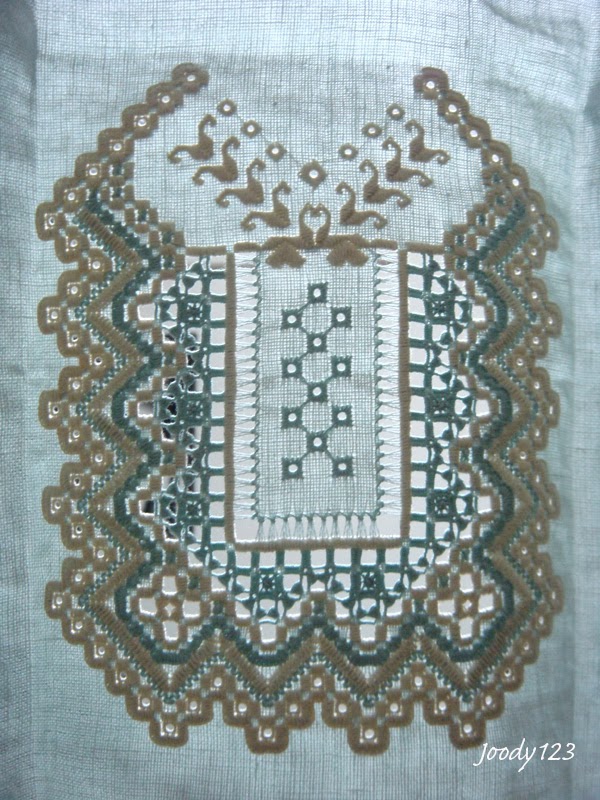
Photo Courtesy of Joody123.blogspot
For doing Hardanger, select an even
weave fabric with visible/counted threads style of fabric. Even with the machine work, this is a
preferred type of material. For hand
embroidery, you can, carefully, count the threads and with Hardanger, the usual
procedure is to use 2 lines of thread and count as a single strand. Using each strand would be more delicate but
much more difficult to work with. A
typical 'bottom weight' or light canvas or even an Aida fabric would be around 22 lines of
thread per one inch.
By hand, this procedure is really
eye straining. I personally would use a
strong magnifying glass but by machine, it is really rather simple. The first trick would be to get the fabric as
straight as possible in the hoop. There
is a 'tip' in Layout Blog
that I consider to be very simple and clever.
The second issue that I want to
point out is that Hardanger tends to be dense and open, alternately. That presents a stabilizing issue. I personally would be using a heavier, and
likely a heavy wash away for this type of work.
I feel that most of Ann's stabilizers are excellent and especially
Badgemaster. If there is a small amount
of the stabilizer left in the strands of the fabric, so much the better for
keeping your work as beautiful as the day it was done.
Norway has been a leader in the use
of Hardanger; frequently it can be seen in the beautiful Norwegian long aprons
called bunads. This type of work is frequently seen, worldwide, in home
linens as well.
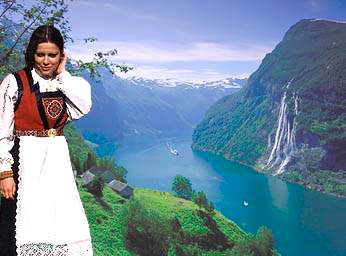
Maiden in bunad (Photos courtesy of
Fjord Travel Norway.)
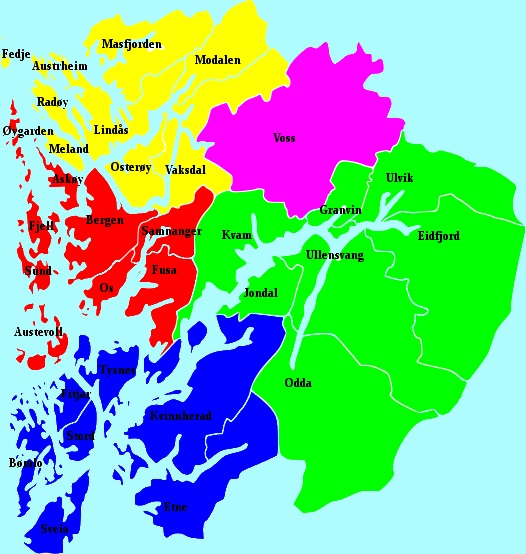
The Hardanger region is in green, map courtesy of WikipediA (Can you say Fjord???)
Hardanger is also considered to be
‘white work' which essentially means that it is accomplished ‘white on white'
making it very subtly elegant. The sculptural nature makes it wonderful
for pattern creation. Newer
work is often in contrasting threads to show off the details.
Hardanger embroidery uses Satin
stitch blocks known as Kloster blocks, consisting of 5 parallel satin
stitches, worked over a group of 4 x 4 ground threads. These blocks enclose
areas of fabric where a number of warp and weft threads are cut and withdrawn,
leaving a network of loose threads and large holes within the shape defined by
the Kloster blocks. Various decorative filling stitches are then worked over
the remaining loose threads and holes to create a lacy effect.
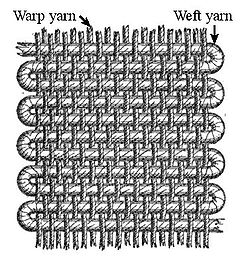
Photo courtesy of WikipediA
Just viewing the examples shows me
how intricate the work my grandmother did actually was. She did teach me to hand
embroider. She would be shocked to see
how we embroider today.
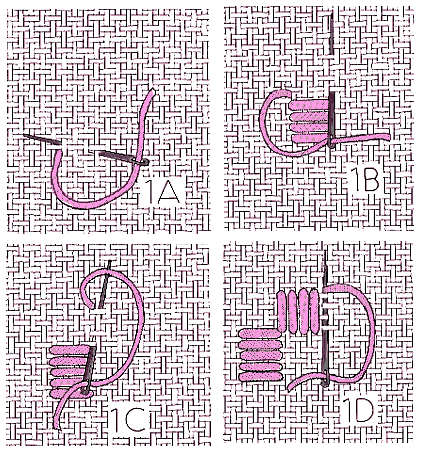
Photo courtesy of caron-net.com
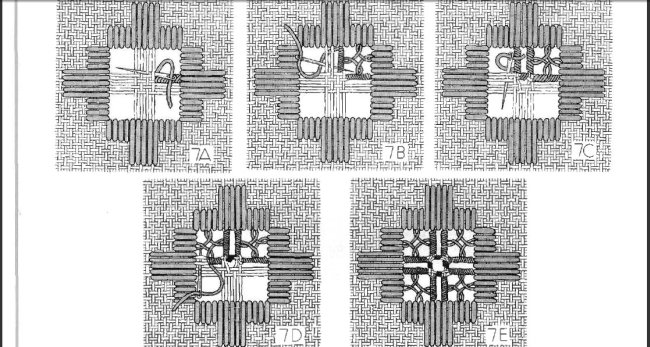
Photo courtesy of Nordic Needle
Digitizers are always trying to
replicate special effects created by our early sisters in embroidery.
This design is no exception. When I found the Hardanger motif, I thought
of all the places I could use it. Those places included a tote bag
pocket, linen selections and a pinafore for my granddaughter among other
things. I did this project as a guest towel as available from All About Blanks.
If you are not familiar with All About Blanks, they have the finest items of linen available on the
net. These guest towels are only $45 for a dozen. At less than $4
per towel, I keep them around for a quick, easy and memorable last minute gift.
While I did not achieve an exact
replica of Hardanger, I feel it is a great representation of the amazing world
of embroidery of years gone by. Additionally, the digitizer for this pattern
did replicate the inside twist called "dove eyes" as shown
in the last diagram above.
The cross stitching of the design
will now allow for definition of the flowers, and the digitizer does call for
this to be done in floral colors. So, this is not following the Hardanger
rules - but then again, who follows rules. . . .Additionally, this particular
design can be done as a hanging ornament, and not just for Christmas.
Imagine it as part of a wall decoration or placed in a foliage plant. What
a find this one is! The design is courtesy of Laura's Sewing Studio.
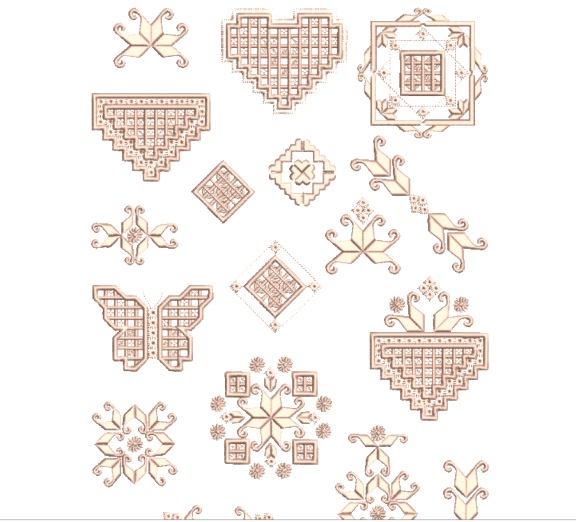
Photo courtesy of Laura's Sewing
Studio.
There is an element of ‘cutwork' in
Hardanger. As you are sewing, you will see the outline that will need to
be removed. See my blog posting on "Cutwork" for further instructions. Don't forget that
when you remove the fabric for the cutwork, leave your water soluble stabilizer (wss) in place. The remainder of the design will be
placed there.
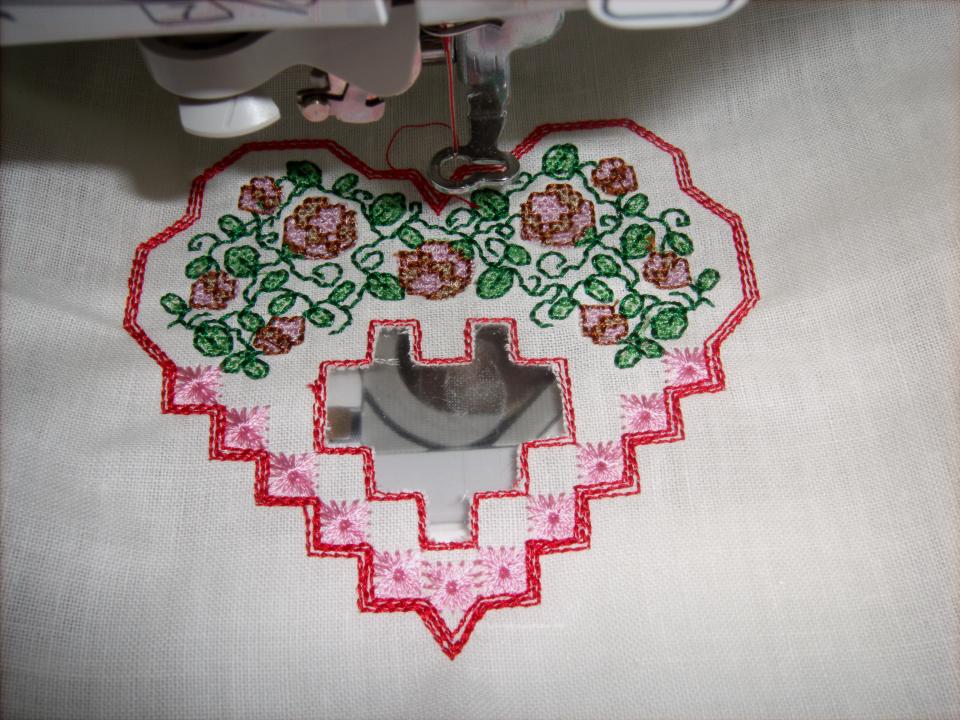
After I completed the design, for
better visibility, I kept the wss in place. Naturally, I will remove it
before giving it as a gift. Here is my interpretation of that design, and
I am delighted with the results. Using quality fabric and design always pays off!
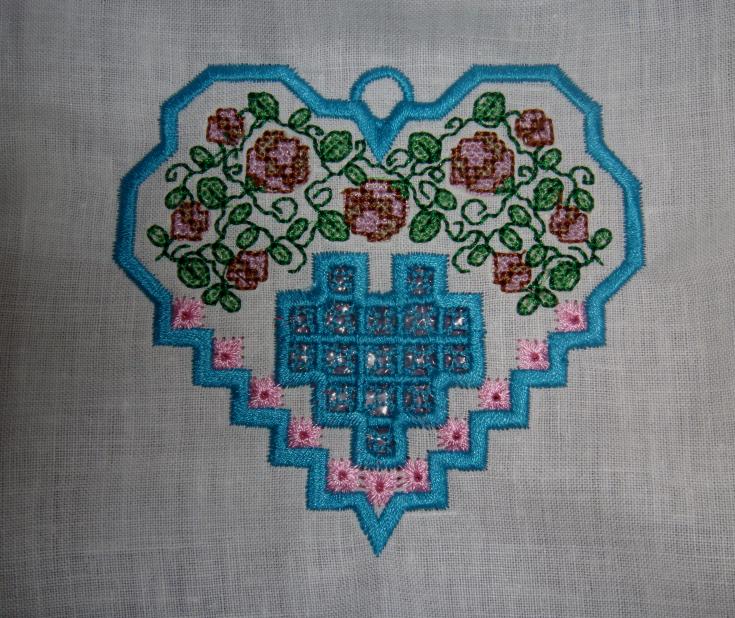
Try it, you will love the
heirloom quality of it.
If you have 6 minutes, you will want to see this: https://www.youtube.com/watch?v=PTRICyLpV94 You will be awed, I guarantee it.
